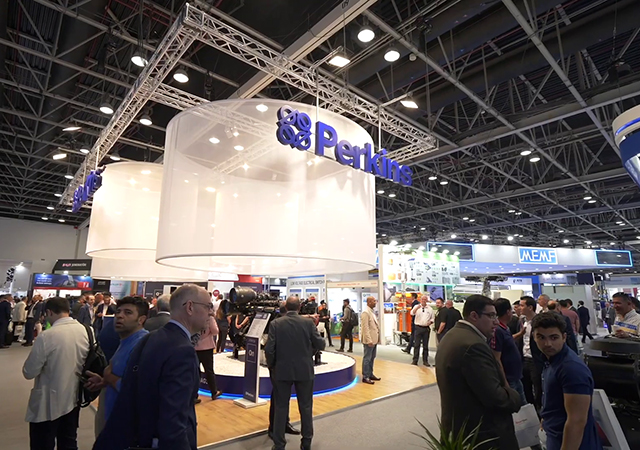
 The high flexibility of the Agruline pipes allows for changes of direction without fittings
The high flexibility of the Agruline pipes allows for changes of direction without fittings
Agru, a leading plastics processor, successfully carried out the record-breaking horizontal directional drilling (HDD)-installation of Agruline PE pipes with outside diameters (ODs) of 1400 mm and 1200 mm in order to construct a large-diameter, twin-pipe culvert underneath the Spree river in Germany.
Supplied by Agru Kunststofftechnik GmbH, the Dutch company Visser & Smit Hanab, as a subcontractor specialised in this method, installed the PE pipeline by carrying out the HDD process. The installation of pipes of this size represented a true world premiere.
Jorn Stoelinga, horizontal directional drilling consultant at Visser & Smit said: “We are proud to be the first to have successfully laid such large diameter PE 100 pipes using the wash boring process. The robust Agruline pipes came away with hardly a scratch. They were easy to weld, and also very easy to pull in thanks to their flexibility.”
The finest HDD technology
 |
|
Visser & Smit Hanab drilled two holes approximately 210 m long underneath the Spree with absolute precision using the HDD process |
Visser & Smit Hanab has considerable experience with HDD. But even these experts had never before laid a PE pipeline with an OD of 1400 mm using the HDD process. Tension was therefore running high as the drilling work began. As a first step, the construction team drilled two pilot borings from the west to the east bank of the Spree. An underground channel was then drilled with one of the most modern HDD systems, which cuts holes with a diameter between 30 and 180 cm, and is able to withstand tensile forces of up to 450 tonnes. Visser & Smit Hanab advanced the drill string along the planned path, adding segment after segment of drill pipe, guiding it precisely down to the centimetre with the help of a gyrocompass. They were able to cross under the Spree at a relatively shallow depth of just 6.5 m, reducing the length of the borehole to about 210 m. A special viscous liquid called drilling fluid or drilling mud conveyed the cuttings up and out of the borehole.
BOREHOLE WIDENED
After successfully crossing underneath the Spree, Visser & Smit Hanab widened the pilot bore to a maximum diameter of 1778 mm (borehole 1 for the pipe with an OD of 1400 mm) in a single step. For this, the team pulled the drill string back, segment by segment, with the back reamer tool fastened to the end. The fly cutter, a continuously rotating tool fitted with nozzles and teeth, cut through the ground. During this process, the drill string at the location of the drilling equipment (west side) had to be shortened continuously, while being lengthened segment by segment on the east side. Bentonite (a mixture of water and clay) served to transport the cuttings out of the borehole, to stabilise the borehole and reduce friction. The drill string remaining in the second borehole was used as a return pipeline to reclaim the drilling fluid. It was therefore possible to dispense with an elaborate construction of a return pipeline for the drilling fluid to the separation plant.
Once the borehole had the required diameter along its entire length, work could be started to pull the prefabricated and tested PE pipeline back through. For this, a bullet-shaped pull head was screwed to the front end of the pre-welded, 220 m long and 1400 mm thick pipeline, and this was then connected to the reamer tool on the end of the drill string by means of a swivel. The swivel between the pull head and the reamer tool prevented the large-diameter pipeline from being rotated while being drawn in. The biggest challenge came right at the start: the giant pipeline had to be threaded into the borehole. For this, the construction team lifted the section of pipeline closest to the borehole, while at the same time pulling it towards the hole. The 1400 mm thick pipeline slid into the drilling fluid in the borehole trench and, thanks to its great flexibility, automatically adapted itself to fit the exit angle of the borehole precisely. After the first few metres of the pipeline had disappeared into the drilling fluid in the borehole, the carrier pipe was pulled into the borehole segment by segment by the drill string. To prevent the pipeline from buoying upwards, the pipeline was filled with water while being pulled in. This simultaneously reduced the buckling pressure significantly, which made it possible to reduce the wall thickness of the pipeline. Thanks to the high flexibility of the PE material, the giant pipeline adapted itself perfectly to fit the parabolic form of the drilled tunnel. It was possible to complete the record-breaking wash boring successfully and to the relief of all those involved.
 |
|
Thanks to its great flexibility, the Agruline pipeline adapted itself precisely to fit the exit angle of the borehole as the pipeline was being pulled in |
After the carrier pipe had been pulled in, the inside diameter of the pipe was tested. This was done with a measuring plate that had the planned inside diameter. Both inside diameters were verified beyond doubt. It was also verified that neither of the pipelines was buckled. To avoid water permeability in the rock mass, it was necessary to seal the annular gap (the gap between the borehole and carrier pipe) effectively. A special filler was inserted into the annular gap to this end. In order to insert the filler effectively, three pipes of different lengths were pulled into the borehole at the same time as the carrier pipe. The filler was able to be inserted into the annular gap at various points via these pipes until it reached the surface at the bore ends. The quantity of filler required equalled the quantity of drilling fluid. Due to the higher density of the filler, the annular gap was filled continuously from the lowest point of the borehole to the borehole's highest point.
CONNECTION TO THE EXISTING PIPELINE
Following the wash boring, the first of the two pipelines was connected to the existing underground GRP pipeline. Given the availability needed for the pipeline, there was only a time window of six days› downtime overall available for connecting both ends. Within this time frame, the existing pipeline had to be emptied and disconnected, the last section of the new PE pipeline had to be welded to the pre-welded connection fitting, and the connection fitting then had to be connected to the existing pipeline. To connect to the existing flanges on the original GRP pipeline, Agru Kunststofftechnik GmbH supplied special flanges made of PE 100-RC, one with a DN 1200 flange connection, and one with an OD 1400 x 83 mm pipeline connection. Because the heating element butt welding process could not be used for the last welds, Agru electrofusion couplers with an OD of 1400 mm were used.
Besides the factor of the technical benefits of the PE 100-RC pipes produced just in time by Agru Kunststofftechnik GmbH, it was possible to adhere to the very tight time schedule due to the detailed project management, punctual delivery and the intensive on-site support provided by Agru Kunststofftechnik GmbH. Altogether, the drillings for the pilot bore and to enlarge the bore, as well as the process of pulling in the pipeline only took 10 days to complete.











